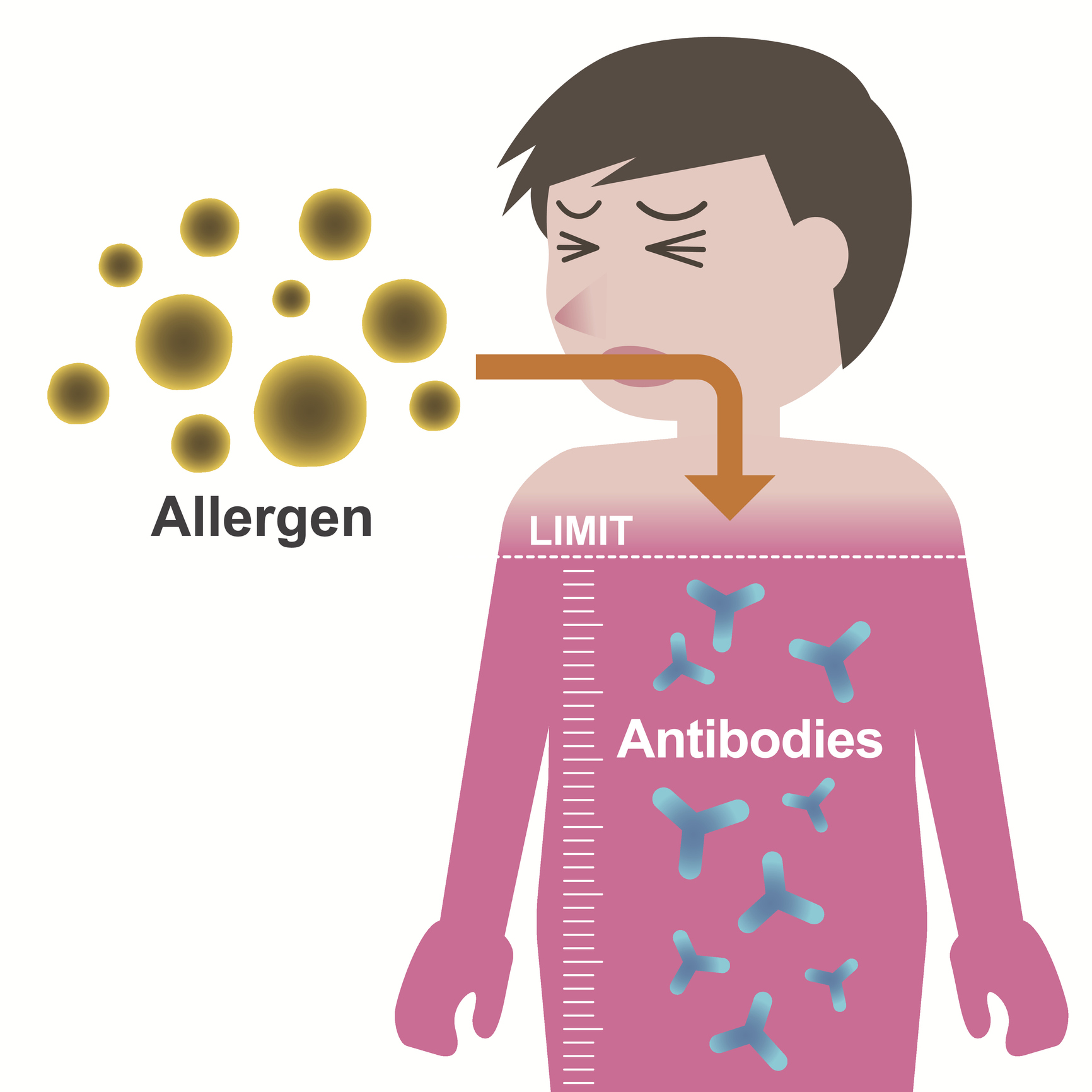- prolekare.cz - Allergic nasal diseases and the efficacy and safety of mometasone furoate
- prolekare.cz - Allergic rhinitis as an occupational disease
- prolekare.cz - Increase in the incidence of pollinosis in urban and rural schoolchildren over the last 20 years (1988-2009)
- prolekare.cz - Allergic rhinitis in a general practitioner's office
- prolekare.cz - Allergic rhinitis and biting disorders in children
- prolekare.cz - Complications of allergic rhinitis
- prolekare.cz - Effect of allergic rhinitis on the quality of singers' voice
- npz.sk - Advice for allergy sufferers: how to survive pollen season
Hay fever: what is seasonal allergic rhinitis and what are its symptoms?

Hay fever is the most common allergic disease. What are its causes and manifestations?
Most common symptoms
- Malaise
- Headache
- Sore Throat
- Eye Pain
- Spirituality
- Depression - depressed mood
- Rash
- The Island
- Swollen eyelid
- Full nose
- Concentration disorders
- Buds
- Dry cough
- Itchy skin
- Itchy eye
- Cutting the eye
- Fatigue
- Anxiety
- Redness of the conjunctivae
- Increased watery eye
Characteristics
Allergy was defined in 1906 by physicians Clemens von Pirquet and Béla Schick. The term allergy is derived from the Greek words allos = different or altered state and ergon = work, reactivity, reaction.
An allergy is generally defined as an exaggerated reaction of the immune system to substances that are commonly encountered. It is caused by the improper activation of immunoglobulin E (IgE) antibodies by an allergen.
Hay fever is defined as an inflammatory disorder of the nasal mucosa that is accompanied by symptoms such as sneezing, runny nose and stuffy nose. It is classified as a systemic disease with local manifestations (on the mucous membranes of the nose and conjunctivae).
Hay fever is not a life-threatening disease. However, the symptoms of hay fever make the patient's life very uncomfortable. They impair physical fitness and adversely affect the patient's mental health.
At best, patients experience symptoms for only a few weeks. At worst, for several months.
How can hay fever complicate our lives?
Hay fever does not automatically mean that we are unable to do our job. However, it does affect our work performance.
In addition to the people who suffer from hay fever, their employers also suffer. This comes in the form of low productivity of the employee with hay fever. A patient with hay fever costs employers 5 to 10 times more than a patient with diabetes.
Worldwide, approximately 10 to 25 % of the population suffers from hay fever. In some age groups, it is as high as 40 % of the population. It is most common between the ages of 15 and 40.
Boys are particularly affected in childhood.
As age increases, the sex ratio evens out.
In recent decades there has been an increase in allergic diseases, especially in children. The most common allergic disease in school-age children is hay fever.
It affects approximately 10 to 15 % of children in the 6 to 7 age group and approximately 25 to 35 % of children aged 13 to 14.
The increase is due to the following factors:
- genetic predisposition
- sensitisation to allergens
- air pollution from exhaled pollutants (especially exhaust fumes)
- climate change (global warming)
How do you know if you have hay fever?
The following table describes the different types and causes of rhinitis
| Allergic rhinitis | Infectious rhinitis | Other forms of rhinitis |
| In most cases it is a secondary viral infection | Caused by exposure to irritants, hormonal dysfunction and specific medications |
According to the traditional division, allergic rhinitis is divided into seasonal and perennial. Currently, the division of allergic rhinitis into:
- intermittent - occurring less than 4 days per week and lasting less than 4 weeks.
- persistent - occurs more than 4 days a week and lasts more than 4 weeks
However, persistent rhinitis should not be confused with rhinitis persistent. The two divisions of rhinitis are complementary. A patient may have a typical seasonal rhinitis (hay fever) which may be intermittent or persistent.
Did you know that...
Over the past 20 years, the incidence of hay fever has tripled in rural areas and doubled in urban areas.
Causes
Genetic predisposition means an increased susceptibility of the organism to the easy production of antibodies (IgE type). Even to low concentrations of allergens, the human organism reacts with increased production of IgE type antibodies.
Pollen plays an important role in the development of hay fever. Pollen contains allergenic proteins.
Pollen grains are very small (0.05 mm). Each plant species has a different pollen grain shape.
Pollen grains enter the female cells in the following ways:
- The smallest pollen grains are dispersed by the wind. Plants (pollinated by the wind) produce them in large quantities. The pollen of these plants is the main cause of hay fever.
- Method: The larger and heavier pollen grains are carried by insects (insect-pollinated plants). Pollen from insect-pollinated plants can only cause allergic symptoms in close contact (picking flowers).
The nasal mucosa becomes hypersensitive (sensitised) with each new contact with the allergen. Accordingly, it can be assumed that the allergic reaction gradually worsens after each contact with the allergen. However, the intensity of the allergic reaction rarely increases.
In fact, each allergic reaction is influenced by many factors. And therefore has a fluctuating character.
We divide an allergic reaction into 2 phases:
- Early phase - The typical manifestations of this phase are swelling and blood circulation of mucous membranes, increased mucus production, smooth muscle contraction and irritation of nerve endings. The result is itching of the nose and sneezing.
- Late phase - It is characterized by the development of allergic local inflammation.

The respiratory tract is considered a gateway for allergens. For this reason, airborne allergens are considered the most important cause of hay fever.
In general, the most common allergens include e.g:
1.
The most common pollen allergen is grass pollen (72%):
- Grasses: fescue, meadow fescue, meadowsweet, speargrass, ryegrass, maidenhair, dog's-bit scabious, reed canary grass.
- Herbs: wormwood, alfalfa, mustard, ragweed, clover, plantain
- Trees: birch, willow, hornbeam, chestnut, maple, oak, ash, beech, alder, hazel, hazel, poplar, lime, plane tree
Did you know that...
It takes a concentration of 10 to 20 pollen grains per cubic metre to cause an allergic reaction. Pollen grains can travel 50 to 100 km. At high altitudes, up to several 1000 km.
Pollen allergy usually begins in February and lasts until October.
The main allergens in the spring are birch and hazel. In the summer, it is mainly grasses. In the autumn, wormwood and ragweed.

In terms of timing, the pollen season can be divided into three periods:
- Tree pollen season - Lasts from approximately February to May (early spring), in more southerly areas from as early as January. Pollen from hazel, alder and birch are considered the most important allergens. Pollen from conifers and fruit trees are weak allergens.
- Grass pollen season - Peaks from May to the end of July.
- Herb pollen season - Typical for late summer and autumn.
2.
Molds are the most common source of allergies, especially in summer and fall.
In most cases, the source of mold allergy is microscopic mold spores. These float in the air like pollen.
Many people think that moulds are only found in the home. However, moulds can also thrive outdoors. Especially in shady and damp places, including soil, plants, dead wood, compost or dead leaves.
3. DISSOLVES
Dust mites are one of the most serious sources of allergies. They breed mainly in mattresses, sofas and duvets. However, they can breed wherever conditions are suitable. The best conditions for mites to breed are:
- a temperature of 25 °C
- a relative humidity of 55-75 %
Symptoms
- inflammation of the eyes.
- watery nasal discharge
- swelling of the nasal mucosa
- difficulty breathing
- watery, burning or itchy eyes
- swelling of the eyelids
- convulsive sneezing
- coughing
- itching of the soft palate
Common symptoms of hay fever also include itchy ears, migraine, joint pain, indigestion, general weakness and fatigue.
See also:
Up to 40 % of hay fever sufferers develop symptoms of bronchial hyperresponsiveness (dry, nonproductive cough to a paroxysmal cough with shortness of breath). In some cases, classic asthma attacks may occur.
As a result of the swelling of the mucous membrane, inhaled air cannot reach the olfactory epithelium in the cranial part of the nasal cavity. As a result, disturbances of the sense of smell may occur.
Mucosal swelling may close the sinuses. The patient may experience pain and pressure in the facial part of the head. Patients with untreated hay fever are more likely to suffer from nosebleeds.
With a long course and inadequate treatment of hay fever, non-specific hyperreactivity may also occur, in which the patient reacts to:
- dust
- perfume
- cigarette smoke
- exhaust fumes
- physical exertion (post-exertional asthma)
The following diseases may be associated with hay fever and complicate its course:
- Allergic conjunctivitis
- chronic sinusitis
- otitis media
- nasal polyps
- atopic eczema
- bronchial asthma
See also:
Hay fever is one of the risk factors for developing bronchial asthma. Especially if the hay fever is untreated or undertreated.
There is a close relationship between hay fever and bronchial asthma. This suggests that one of the preventive measures for the development of bronchial asthma is adequate treatment of hay fever.
What complications can occur in children?
Itching of the nose in children causes them to unconsciously rub their nose with their hands upwards. In such cases, we speak of the so-called allergic greeting.
In addition, hay fever in children can cause bite disorders, especially a crossed back bite and overbite. Children who suffer from hay fever have up to three times the risk of developing dental disorders.
Diagnostics
1.
It focuses on:
- family history of allergies
- other diseases (eczema, asthma)
- seasonality of symptoms
2. ENT examination
Especially in case of negative skin tests.
3. Allergy examination
Skin intradermal or prick tests, determination of total IgE in serum, determination of allergen-specific IgE in serum by ELISA are used. Prick tests allow direct determination of the degree of allergic reaction.
4.
Blood count with differential white blood cell count (leukogram) and erythrocyte sedimentation rate. In the case of hay fever, an increased number of eosinophils is considered a clear indicator.
5. Rhinomanometry
Rhinomanometry is a non-invasive functional examination of nasal ventilation (breathing through the nose). The examination allows the physician to assess the degree of nasal patency. The examination is indicated in children from 5 years of age. The examination is performed using nasal olives through which the patient breathes with the mouth closed into the rhinomanometer.
6. X-ray examination of the chest and paranasal sinuses
Course
Did you know that...
The concentration of pollen in the air is strongly influenced by the weather. Hot, dry and windy weather aids the spread of pollen. Rain, on the other hand, precipitates pollen to the ground and reduces the risk of discomfort.
Contact with the allergen causes an allergic inflammation of the nasal mucosa in a sensitive (sensitised) person. The allergic reaction is divided into 2 phases:
- The early phase of the allergic reaction occurs after just a few minutes of contact with the allergen. This phase of the allergic inflammatory reaction is caused by so-called vasoactive mediators (histamine, prostaglandins, leukotrienes). These vasoactive mediators cause dilation of blood vessels (vasodilation). As a result of this action, the nasal mucosa becomes swollen and reddened with the typical production of watery secretions. The mediators also irritate the nerve endings. Their action causes itching of the nose and sneezing.
- The late phase of inflammation usually occurs several hours (4 to 6 hours) after contact with the allergen and is associated with the activation of a number of cells (T-lymphocytes, mast cells, basophils, eosinophils, endothelial and epithelial cells). It is characterised by the development of local inflammation.

How it is treated: Hay fever
How to treat allergic hay fever? Medication, immunotherapy and adherence to treatment
Show moreHay fever is treated by
Other names
Interesting resources
Related










